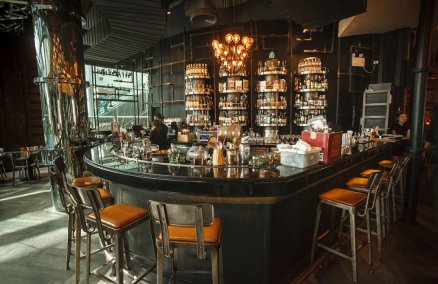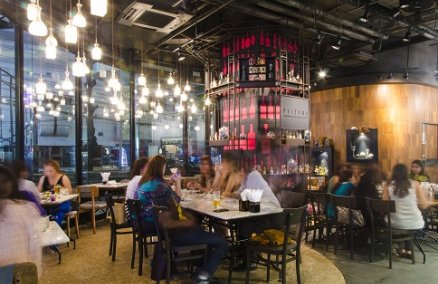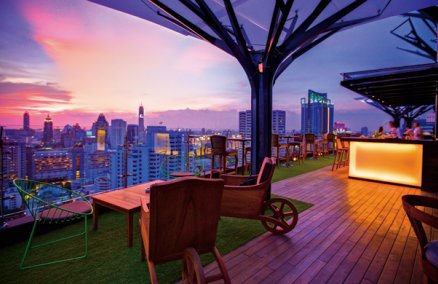Technique & medium: Acrylic collage on canvas.
We love the title of your exhibition, what does it refer to?
It refers to my everyday feelings towards things that happen in today’s society. When I get up in the morning and watch the news on TV, the general state of affairs is just downright depressing. It sometimes discourages me and makes me want to get away from it all. On a whole, I’ve tried to capture that melancholic feeling and translate it into the artworks featured in this exhibition.
But your works, on the other hand, are fun and light-hearted?
I like drawing cartoons and characters. I think most of us grew up drawing and doodling stuff in our school notebooks. My work may seem like they come from the page of a comic book, but they’re not to be taken lightly.
Can you tell us about Cruising Ahead?
This painting was inspired by a piece I did for BACC’s exhibition Imagine Peace where each artist was assigned to create an artwork which reflected their visions of peace. Cruising Ahead is all about the will to go forward even though there’s an obstacle in front of you, which, in this case, is the waterfall.
What does the curtain symbolize?
The fabric collage symbolizes concealment—things that you don’t want other people to see or know about. Curtains are also associated with the past and nostalgic feelings that come with it.
This painting reminds us of the biblical story of Noah’s Ark, is that intentional?
I didn’t start out with that notion, but now that you’ve mentioned it, I guess it is a little bit!
Catching up about Yuree Kensaku more in her exhibition Shortcut to Melancholy Hill
Advertisement


















